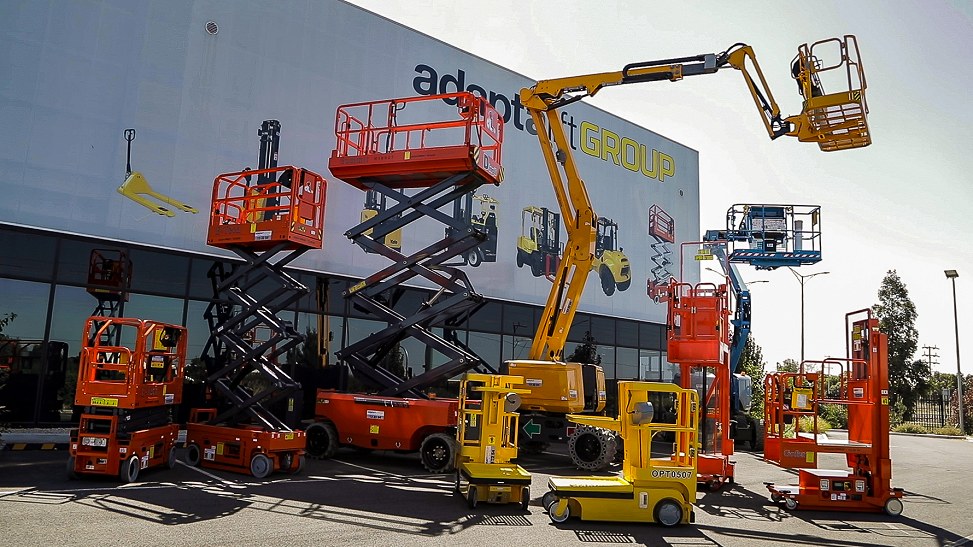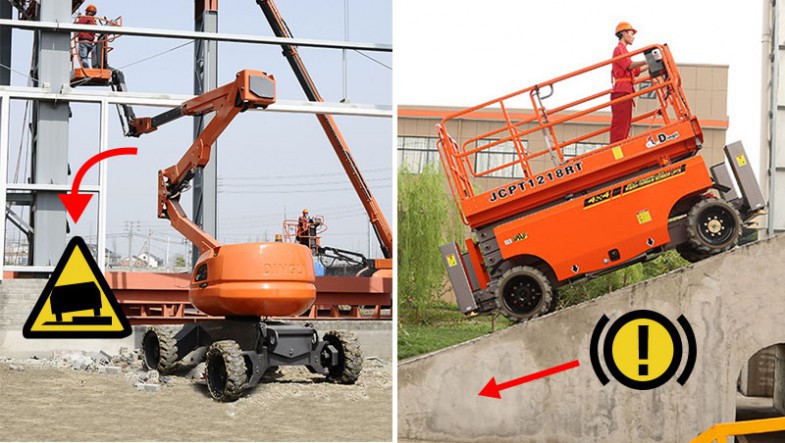7 Tips to Operate a Scissor Lift Safely
Scissor lifts are a convenient type of access equipment allowing work to be carried out at height.
The higher a scissor lifts working height increase, so does the risk.
A properly maintained scissor lift can not only increase productivity but also safety.
Our Access Rentals team often get asked for tips on how to operate units safely, in this post we cover some tips to increase the safety of operators and employees working in the surrounding areas of scissor lifts.
1. Choose the Right Scissor Lift or EWP for Your Application
Using the wrong type of equipment is a common factor in workplace accidents and injuries.
Operators must be clear on a scissor lifts operational capabilities before they commence work ensuring the unit is suitable to complete the job.
Some example questions operators must answer when considering if a scissor lift is the correct piece of equipment for their application include:
- Is the scissor lift capable of safely carrying the load weight I require?
- What areas will I be operating the scissor lift in? Indoors or outdoors
- Is the scissor lift capable of safely raising to the work height I require?
- What are the ground conditions where I will be operating? Is the ground hard or soft?

2. Know the Hazards and Watch Out for Them
It is imperative that scissor lift operators are aware of potential hazards of operating scissor lifts and in the area they are working.
Understanding the possible hazards can help operators to identify hazards during operations and mitigate before they occur.
Some example hazards include:
- Operators being crushed or pinned particularly when the lift is being moved or raised
- Operators falling from height if the lift tips over or they reach to far out from the platform
- Environmental factors such as changes in the weather, e.g., using an electric scissor lift in the rain
3. Never Exceed a Units Safe Working Limit (S.W.L)
To ensure operator and employees working in the same area as scissor lifts safety it is imperative that the unit’s manufacturer specified safe working limit (S.W.L) is never exceeded.
The combined weight of the following must never exceed a scissor lifts S.W.L or the risk of accident and injury increase:
- Operator/s individual weights
- Weight of all tools, materials and equipment being used on the lift’s platform
Overloading a scissor lift may lead to serious accident or injury or operators including:
- The unit tipping over
- Operators falling from the platform
- Tools, equipment, or materials falling from the platform and injuring workers below
4. Never Exceed a Scissor Lifts Safe Working Angle or Maximum Gradient
For mobile scissor lifts the slope or gradient of the ground it is operating on plays a crucial role in the units stability being maintained.
All scissor lifts have a manufacturer specified maximum slope or tilt the unit can be moved or elevated on that is clearly stated in the product manual and also on the lifts rating plate.
For maximum stability scissor lifts should be operated on solid flat ground or the risk of the unit tipping over increases.

5. Use Stabilisation Techniques When Using a Scissor Lift
Operators should always use outriggers when they’re fitted to the unit.
Many scissor lifts are fitted with additional stability support such as outriggers that disperse the weight of loads to maintain the lifts centre of gravity when being operated.
6. Enlist the Help of Spotters
Spotters are additional employees who walk alongside the scissor lift whilst it is being moved, raised or lowered.
Spotters can have an unobstructed view of the work zone and help identify and alert the lift operator to any potential hazards whilst the unit is in use.
All spotters should be trained in how to lower the lift from the unit controls at the base of the unit so they can respond and lower the lift in a timely manner in the event of an emergency occurring with the platform raised.
7. Utilise a Scissor Lifts In-built Safety Features
Not all scissor lifts are built equally, businesses should look to purchase lifts that feature the latest and highest level safety features to better protect their workers.
Engineered safety features of scissor lifts may include:
- Guard rails to keep workers inside the platform
- Spring loaded platform gates that lock automatically to prevent the gate from opening unexpectedly at height so workers, tools or materials can’t fall off
- Overhead warning systems that provide audible warnings when the platform is raised and there is an overhanging object that the operator could accidentally hit or become jammed up against
For further advice on scissor lift operator safety and for all your access equipment sales, rental and service needs contact one of our EWP experts on 13 22 54 or via our website.